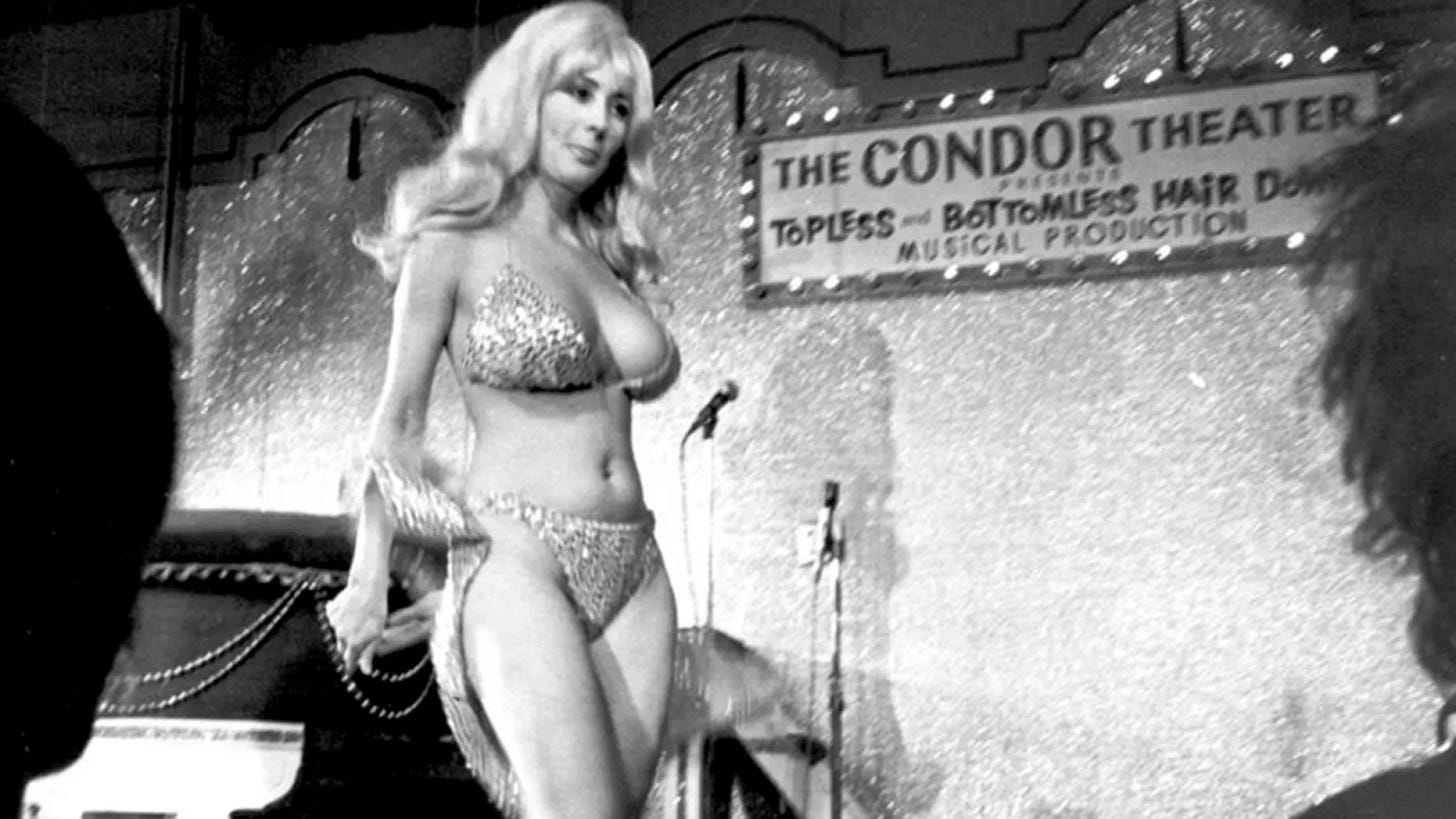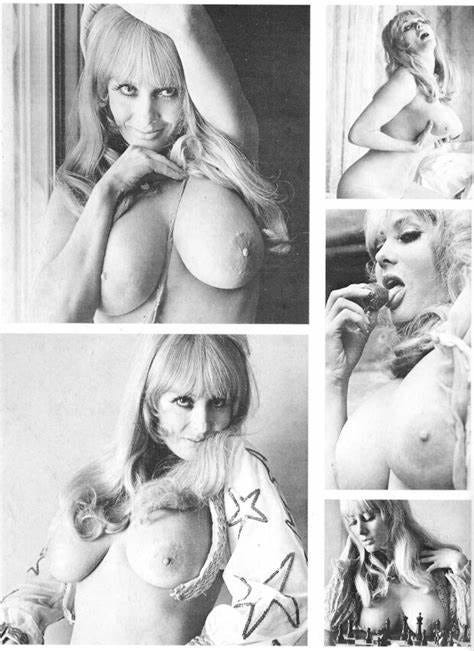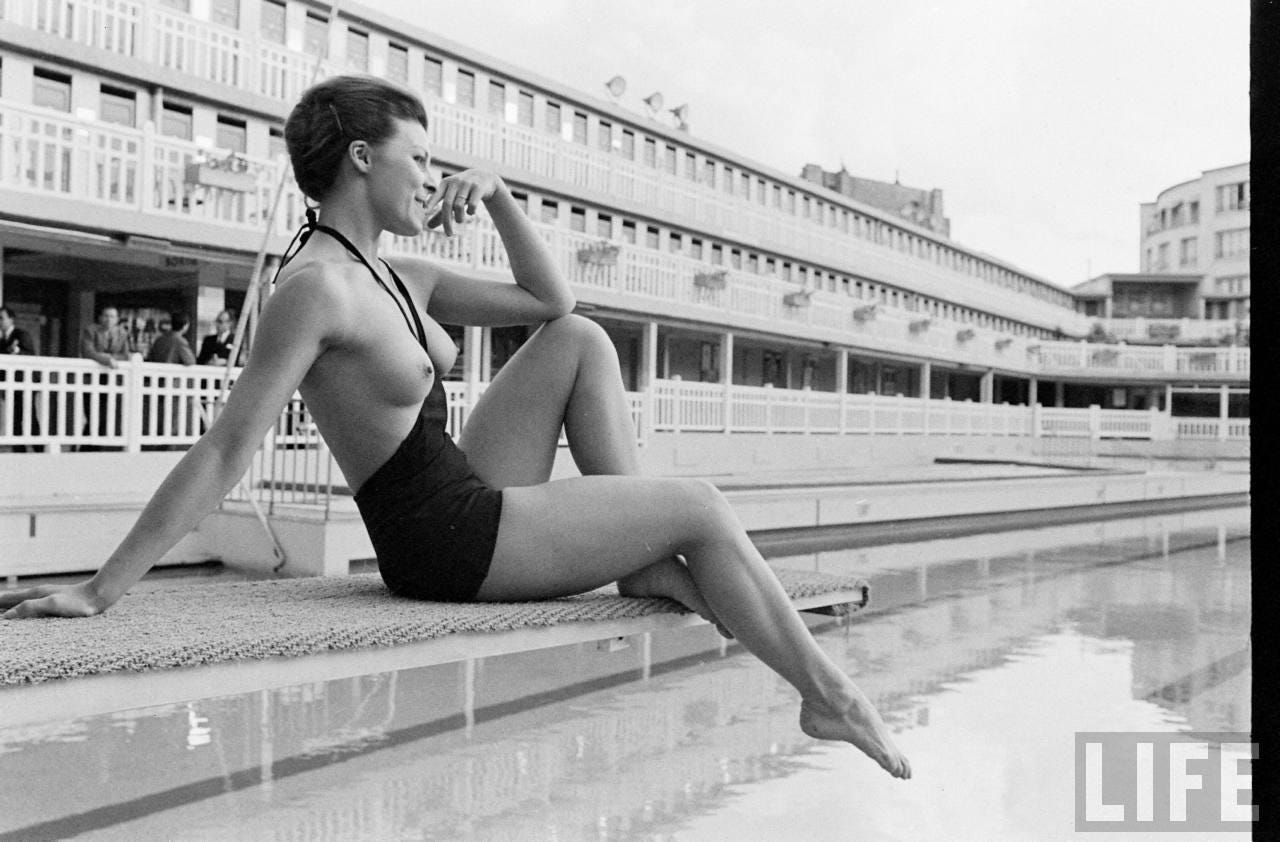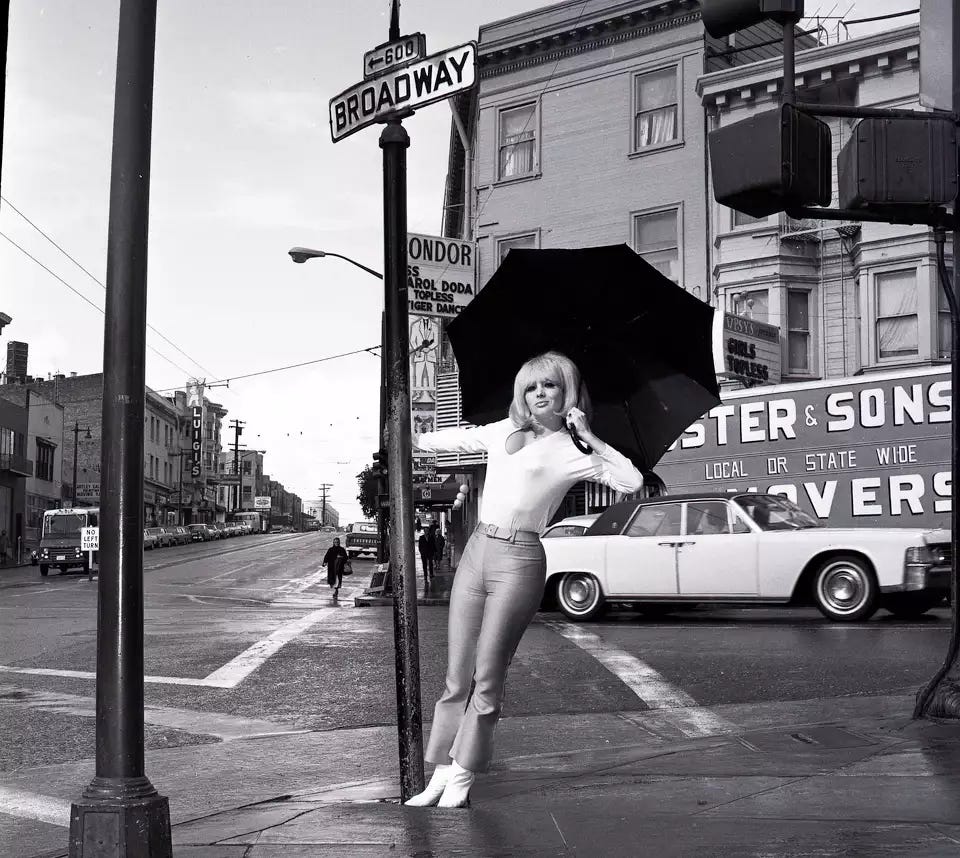‘Carol Doda Topless at the Condor’ Review: Her Breasts Launched A Revolution NSFW
The 1960's challenged many of the norms that had existed before, from comedy with Lenny Bruce to music with Bob Dylan. Carol Doda changed societies view of women's bodies.
Before the term “sex worker” existed some women rejected societies view of women in the 1960’s. Trapped by a society that did not allow women to have credit cards, run their own business or get loans from a bank these women wanted more than just to get married and have kids. The documentary “Carol Doda Topless at The Condor,” is jam packed with footage of the era that until now usually wasn’t mentioned in stories of change during the 1960’s. Yet her actions would have a global impact on the way society understood women’s bodies.
“As if I invented nudity,” the monokini designer remarked to the Fort Worth Star-Telegram in 1964, on the subject of his famous breast-baring swimsuit. It’s mind-boggling that more than half a century later Rudi Gernreich’s most iconic design is unpostable on Instagram, Facebook or other social media. It remains as revolutionary today as it was then, when models who posed wearing it received death threats.
Carol Doda had been a cocktail waitress who had become beloved at The Condor, a strip club where the dancers wore pasties to cover up their “shocking” nipples. This was at a time when a woman could be arrested if she nursed her baby in public. In fact, women were told not to breast feed at the time and that had the effect of making men fetishize breasts. Carol might break into a dance in between serving drinks and the customers loved her for this. Management noticed and made her a dancer at the club. Carol was given designer Rudi Gernreich’s topless swimsuit by Condor publicist “Big” Davy Rosenberg and asked to wear it while doing her usual dance routine, and the rest is history.
Literally within hours the streets filled with cars and there were hours long waits to get into the Condor. Word spread like a prairie fire that a dancer was wearing the monokini and not only men- but couples and groups of women came to see Carol.
As did the police.
If the police would arrest a mother for breast feeding, there was no way they would allow a woman to dance topless.
“Carol Doda Topless at The Condor,” raises an interesting question. Carol knew there was nudity in theater and in magazines. Why was it OK to have nudity onstage in theater but not ok at clubs? Not a revolutionary thought by any means, but the moment she dared wear a monokini in public she directly challenged societies views of women. She became a revolutionary.
What is the most amazing aspect of the documentary is the neglected footage of the era that captures the moment when feminists threatened to burn bras and strippers risked arrest by declaring they were not ashamed of their breasts. They were on different battlefields, but their war was the same.
I’ve already mentioned that social media is terrified of women’s breasts, but what you may not know that society as a whole has still resisted change. In Chicago Lady GaGa was almost arrested for wearing a revealing swimsuit. Women are not allowed to wear a thong on beaches, but gay men can. A man can show his nipples of course, a woman can go to jail for showing hers. And Chicago is considered a progressive city. It may be her body, but it’s his rules.
About the film: San Francisco’s first topless dancer, the legendary Carol Doda, reshaped the city’s nightlife and transformed America’s relationship to female nudity in the 1960s. Using the male gaze to her advantage, Doda found power, letting it rip to great effect. This fascinating documentary explores the legacy of a game-changing icon. With co-directors Marlo McKenzie and Jonathan Parker, plus producer Metallica’s Lars Ulrich.







